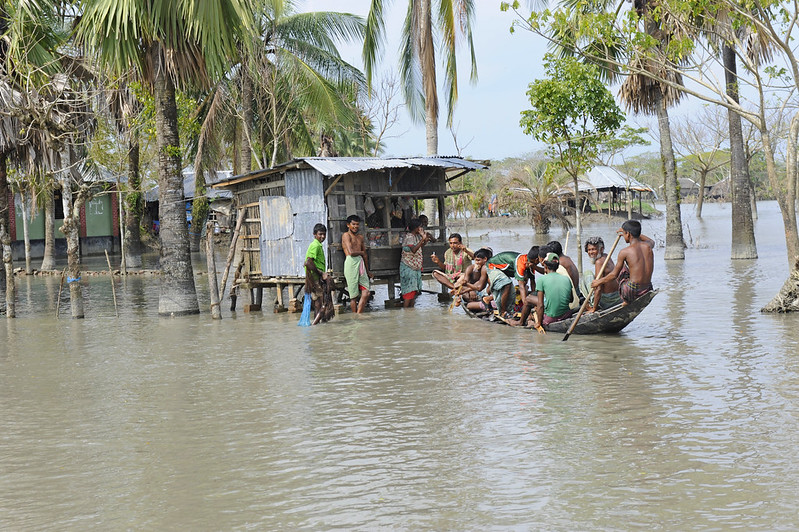Monsoons in South Asian Countries

Monsoons are seasonal changes in the direction of the wind in a region that causes wet and dry seasons. This phenomenon is most associated with the Indian Ocean where its effects greatly impact South Asian countries. The summer monsoon, which occurs between April and September, brings the wet season. Warm, moist air from the Indian Ocean moves inland and brings heavy rainfall and a humid climate. In contrast, the winter monsoon occurs between October and April and brings the dry season, but it is often weaker than the summer monsoons as the Himalayan Mountains prevent most of the dry air from reaching coastal countries. Monsoons in South Asian countries contribute to many industries, such as farming and electricity, however, there are adverse effects.
Negative Impacts of Monsoons in South Asian Countries
Here is a closer look at how monsoons have impacted some countries.
- India. With a population of nearly 1.4 billion people, India is one of Asia’s largest countries. Agriculture makes up 15% of the country’s gross domestic product and more than half of the population works in this industry. Consequently, when there is too little or too much rainfall it can be severely damaging to the economy and the livelihoods of millions. The 2009 summer monsoon, for example, brought low rainfall that prevented farmers from planting their crops. Farmers were left to sell their starved farm animals for only a fraction of the normal price. Years with little rainfall also affect India’s electricity as hydropower makes up 25% of its energy source. Likewise, higher levels of rainfall can lead to floods, coastal damage and other disasters. In 2019, flooding due to heavy rain led to 1,200 deaths and millions of displaced individuals.
- Bangladesh. The low elevation and dense population of Bangladesh make it extra vulnerable to the impact of monsoons. Now, with the rise of COVID-19 and hundreds of thousands of Rohingya refugees in the country, the summer 2020 monsoon has affected 5.4 million lives. This monsoon season brought heavy rainfall that led to the worst floods Bangladesh has faced within the last decade. Nearly a million homes were submerged underwater and 600 square miles of farmland faced damage due to the floods. Unfortunately, the pandemic has made relief efforts difficult to reach the country.
- Pakistan. Similar to Bangladesh, Pakistan also faced heavy rainfall and floods from the 2020 monsoon season. More than 400 people have died with another 400 injured and more than 200,000 homes severely damaged by floods and landslides across the country. The government reported that the excessive rainfall destroyed nearly 1 million acres of farmland leaving farmers and consumers in a difficult position. In the Sindh Province, the impact of the monsoon displaced 68,000 people who are now in relief camps. The summer monsoons also affect the short-term and long-term health of victims as disease and infection spread faster within relief camps and the water. In 2010, communities affected by flooding reported 113,981 cases of respiratory tract infections.
Relief Efforts
The countries above are only a few of the several areas affected by monsoons in the region. Fortunately, several agencies provide emergency relief for monsoons in South Asian countries. During the 2020 floods, the U.N. helped with the evacuation of 500,000 people and prepared to provide humanitarian aid to the most affected and vulnerable communities. In Bangladesh, humanitarian agencies worked closely with the government to provide victims with basic necessities, such as food, water, shelter and other supplies.
Additionally, the U.N. launched a $40 million response plan to help more than 1 million people. The Directorate-General for European Civil Protection and Humanitarian Aid Operations gave more than $1 million in emergency funding to provide relief to the Sindh Province in Pakistan and funded other operations that provided basic needs to 96,250 people. Other agencies such as UNICEF are on standby, ready to provide relief to any country impacted by natural disasters. The work of these organizations is critical to saving lives.
– Giselle Ramirez-Garcia
Photo: Flickr
